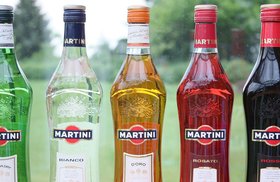Sherry (Wine Styles, Flavors, 8 Best Bottles 2025)
The delightful Sherry has come a long way from being William Shakespeare’s cherished tipple to becoming a beloved cocktail ingredient.
Although it did get dismissed as an outdated fortified drink along the way, it has seen a recent resurgence in popularity - and is now served as an aperitif, mixed in refreshing cocktails, and is also used for cooking.
In this article, we’ll uncover the secrets of this classic Spanish wine, its origin story, wine styles, and winemaking. We’ll also discover the best Sherry wines you can buy in 2024 and an easy way to build a wine collection.
Further reading
- If you're keen to invest in collectible wines, get a headstart with this Comprehensive Primer on Wine Investment.
- Planning a party? Check out these super-useful guides on How to Open a Wine Bottle (like a pro!) and How Many Glasses are in a Bottle of Wine.
What is Sherry or Sherry Wine?
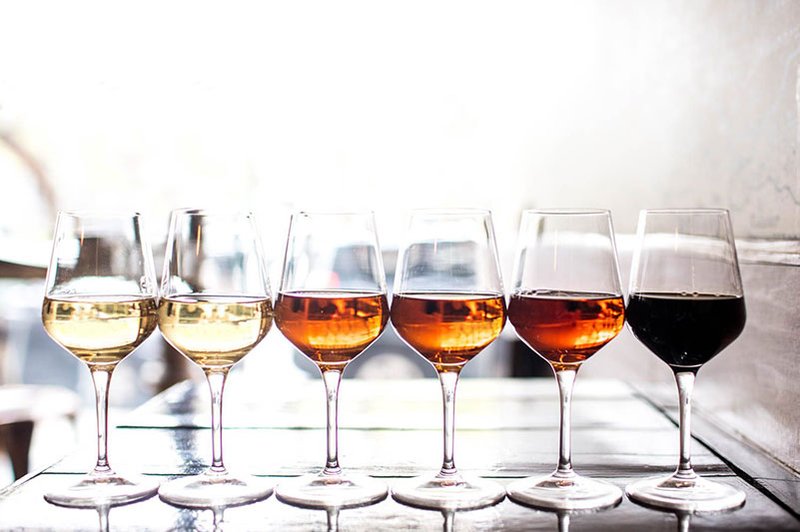
Sherry or Sherry wine is a fortified white wine from the Andalusia region of Spain. True Sherry is native to the southern Spanish town of Jerez.
The traditional Sherry grape varieties are Palomino, Moscatel, and Pedro Ximenez.
But what makes Sherry different from other wines?
Regular Wine vs. Sherry
Regular wine is made using red and white grapes. It is produced worldwide and may be vintage or non-vintage.
In contrast, Sherry is always a fortified wine, made with only white grape varietals. True Sherry is produced exclusively in southern Spain. It is also almost always a blend of older and younger wines - mixed according to the solera system. (We’ll tell you more about this in a bit.)
Now, is Sherry the same as Port wine?
Port Wine vs. Sherry
Though both Port and Sherry are fortified wines from the Iberian coast, they have some differences:
- Grape Varieties: While Sherry only uses white grape varietals, Port can be produced using red (Tawny Port) or white grapes (White Port). So, Port can be a fortified white or red wine.
- Region: Sherry is native to Andalucia in Southern Spain, whereas Port belongs to the Douro Valley of northern Portugal. Vintage Port is produced from the best grapes of this region.
- Fortification: Sherry is fortified after fermentation, while Port is fortified during the fermentation. So, Port contains residual sugar and is usually sweeter than Sherry.
- Alcohol content: Depending on the type of Sherry, the alcohol by volume (ABV) varies between 15-22% and Port has an ABV of 16-21%.
Next, let’s look at the differences between cooking and drinking Sherry.
Cooking Sherry vs. Drinking Sherry
Cooking Sherry is made from the same grape varieties as regular drinking Sherry.
However, cooking Sherry also contains sodium and potassium that increase its shelf life. These preservatives also make the Sherry salty and completely undrinkable.
Now, let’s dive into the origin story of Sherry wine.
A Brief History of Sherry Wine
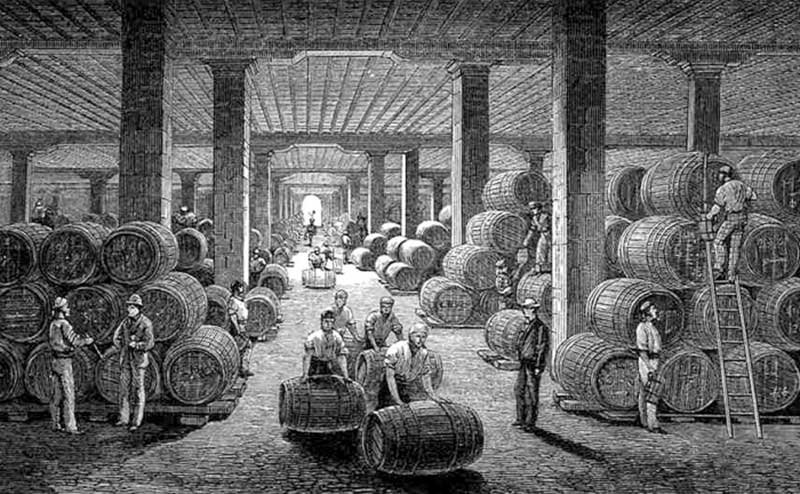
The name Sherry comes from the Moorish word (Sherish) for Jerez or Xeres.
The origin of Sherry dates back to 1100 BCE, when winemaking was introduced in Spain by the Phoenicians. In 711 CE, when the Moors conquered Jerez, brandy making and wine fortification became popular and Sherry production flourished.
Later on, in 1587, the British pirate, Sir Francis Drake, invaded Cadiz and brought 2,900 oak barrels of Sherry back home to England.
Seduced by this new delectable wine, Great Britain soon became a dedicated importer of Sherry. Many English Sherry producers and families established their cellars in Jerez.
By the dawn of the 17th century, Sherry production peaked because of its increased shelf life (due to fortification) and ease of transportation without temperature-controlled storage.
The golden period of Sherry wine was in the 1970s when the export of Sherry casks was almost double that of today. Between the 19th and 20th centuries, wine production declined in Jerez, and Sherry was quickly forgotten.
It is now slowly charting a comeback.
Let’s take a look at the major regions of Sherry production.
Sherry Wine Regions
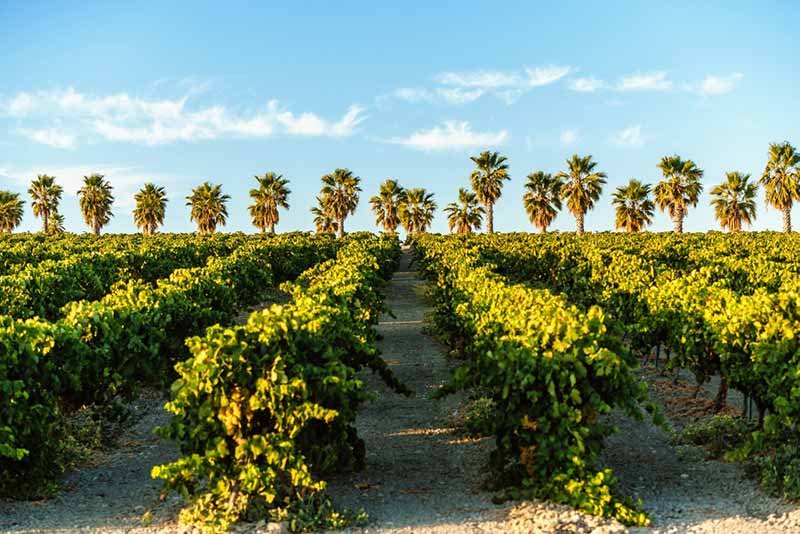
True Sherry production is exclusive to southwest Spain in the ‘Sherry Triangle’, which is the area between the towns of:
- Jerez de la Frontera
- El Puerto de Santa Maria
- Sanlúcar de Barrameda
They make up Sherry’s native Denominacion de Origin (DO) of Jerez y Sanlucar de Barrameda.
The Jerez terroir is great for growing the Sherry grape varietals. The region has a warm climate and three distinct soil types:
- Albariza
- Barros
- Arenas
Albariza soil is best for growing Palomino (the dominant Sherry grape), while Barros and Arenas are great for growing Pedro Ximénez and Moscatel.
Let’s now explore what’s special about the winemaking of Sherry wine.
Vinification of Sherry Wine
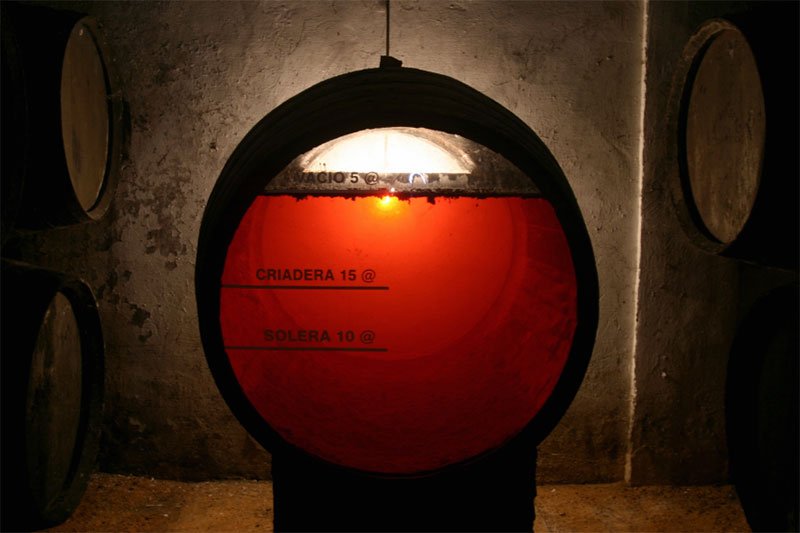
The Sherry winemaking consists of four stages:
- Pressing: The harvested grapes are crushed and pressed several times to extract the grape must. The must from each consecutive press is used in different Sherry styles like Fino and Manzanilla Sherry (first press), Oloroso (second press), and Sherry vinegar (additional presses.)
- Fermentation: The must is transferred to stainless steel tanks and fermented for two months. Sherry fermentation can be oxidative (in the presence of air) or biological (in the absence of air.) During biological fermentation, a layer of yeast or flor forms on the top of the base wine and cuts off oxidation.
- Fortification: The next step is the fortification of the white wine (en rama) obtained after fermentation. Equal parts of distilled spirit and base wine are mixed. The mixture is then combined with the younger wines in Sherry casks.
- Solera aging: This is the final stage of the wine maturation. The fortified wine is stored in American oak barrels, stacked in rows one above the other in a Sherry bodega (or cellar.) Each stack holds wines of the same age.
The youngest wines are kept at the top, while the mature Sherry barrels are stored in the bottom row (solera.)
Every time fully aged Sherry is extracted from the solera, the bottom barrels are topped up with Sherry from the row just above it.
The Sherry passes down through each row in this way for years until it is ready for bottling.
Solera aged sherries can be classified as:
- VOS: Very Old Sherry aged for 20 years
- VORS: Very Old Rare Sherry aged for 30 years
Now, what are the different Sherry wine varieties?
Sherry Wine Styles
While dry Sherry styles use the Palomino grape, sweeter Sherry wines are produced with the Moscatel and Pedro Ximenez grape varieties.
These are the three types of drinking Sherry:
1. Dry Sherry Wine
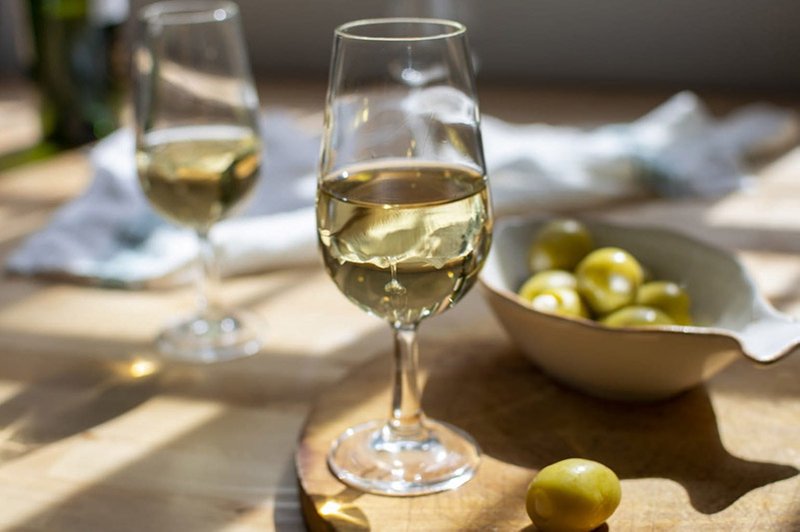
Given its increasing popularity, dry Sherry is a favorite among Sherry producers. It has low acidity and some residual sugar.
Based on how they are aged - ‘oxidatively’ or ‘biologically’- dry sherries are classified as:
- Fino: Fino Sherry is a dry Sherry wine with an alcohol content of 15-16% ABV. This is the driest Sherry style and undergoes aging without oxidation under a layer of flor yeast.
- Manzanilla: The Manzanilla wine is dark brown in color. It is biologically aged in Sanlúcar de Barrameda and has its own DO - “Manzanilla - Sanlúcar de Barrameda”.
- Amontillado: Amontillado has an ABV of 17-20%. This style of Sherry goes through biological aging, after which it is aged oxidatively without the flor yeast.
- Oloroso: This dry Sherry (ABV 18-19%) is produced by oxidative fermentation of the Palomino grape. Oloroso is aged for a long time - up to 40 years.
- Palo Cortado: Palo Cortado is a dark reddish Sherry style with about 22% ABV. It is an oxidatively aged Sherry made with younger wine. This Sherry undergoes two fortification stages and is similar to a lighter-bodied Oloroso.
2. Naturally Sweet Sherry Wine
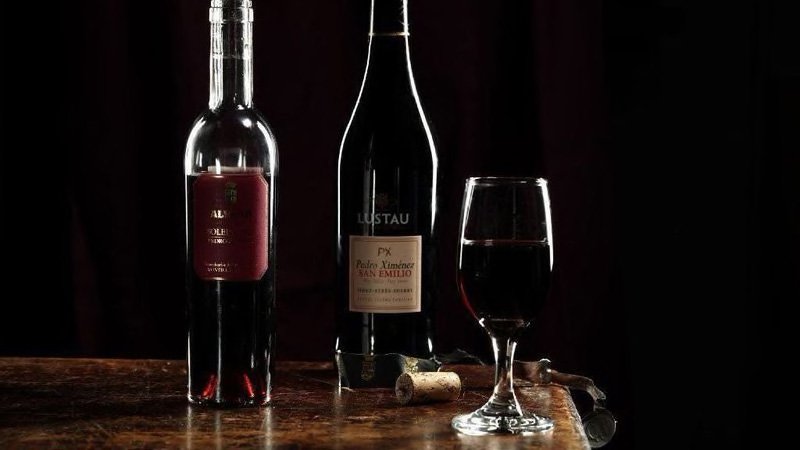
Naturally sweet wine is produced by stopping the fermentation mid-way. This prevents the conversion of all the residual sugar into alcohol. Depending on the grape variety, there are two types of naturally sweet sherries:
- Pedro Ximenez (PX): This syrupy dessert wine, made from completely sunned grapes, has toffee, fig, and date flavors.
- Moscatel: This Sherry is produced with fully or partially sunned Moscatel grapes. It has an intense floral nose, medium acidity, and a sweet palate.
3. Sweet Sherry Wine
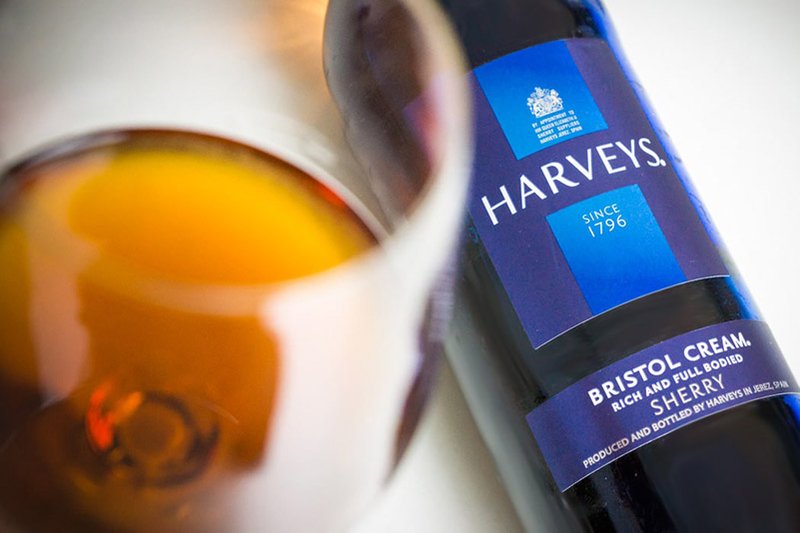
Sweet sherries are made by blending two or more fully aged Sherry wines in the bodegas. They are classified as:
- Pale Cream Sherry: The Pale Cream Sherry style is a biologically aged Fino Sherry or Manzanilla wine with 45-115 grams of sugar per liter.
- Medium Sherry: Medium Sherry is made from Amontillado and has about 5-115 grams of sugar per liter.
- Cream Sherry: It is a sweeter Sherry wine ( 115 -140 grams of sugar per liter) made by blending Amontillado or Oloroso with Pedro Ximenez.
Ready to buy Sherry bottles by now?
Before you do, take a look at some food pairings and how you can best serve your Sherry wine.
Sherry Wine Food Pairings and Serving
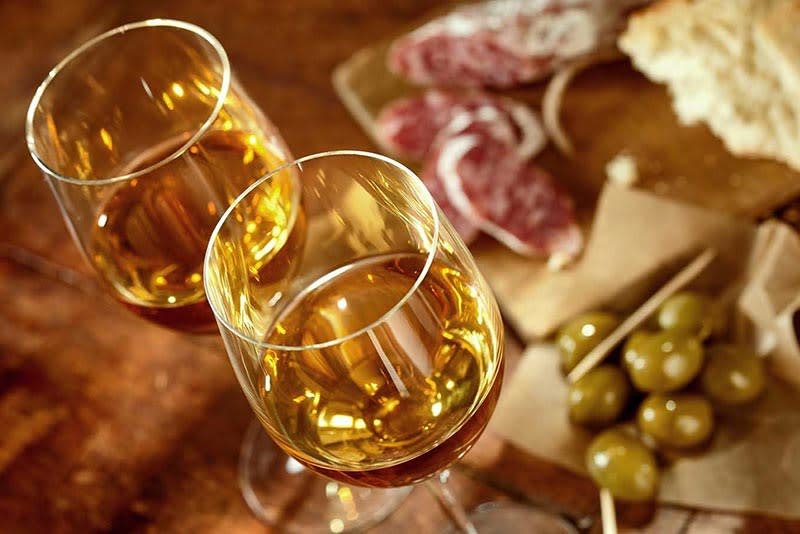
Sherry is a low-tannin wine that pairs excellently with a variety of dishes:
- Fino: Pair with almonds, olives, ham, and chips.
- Manzanilla Sherry: This is a great pair for fresh and raw seafood, including sushi.
- Amontillado Sherry: Serve with tapas, white meats, turkey, and mushroom sauce.
- Oloroso: Complements rich meats and cheeses like manchego.
- Cream Sherry: Works best as an after-dinner sipper or as a complement to ice cream or pudding.
Sherry can be served at room temperature or slightly chilled.
When it comes to storage, you can refrigerate your Sherry bottle for a couple of months after opening, unlike regular wines. Unopened Sherry wines can last for months and even years if stored in a dark and cold place.
Here comes the best part:
We have chosen some great Sherry bottles for you to try.
8 Best Sherry Wines to Buy in 2024
The leading Sherry producers in Spain are Lustau, Hidalgo, Tio Pepe, and Gonzalez Byass. Here’s a list of our top 8 Sherry wines to buy in 2024:
1. 1933 Williams & Humbert Coleccion Anadas Single Cask Oloroso Sherry

This delightful Sherry is suffused with walnut and almond aromas. The palate is equally beautiful, with tasting notes of raisin, caramel, dates, and figs.
Price of 1933 Williams & Humbert Coleccion Anadas Single Cask Oloroso Sherry: $5,498
2. NV Barbadillo Reliquia Amontillado Sherry
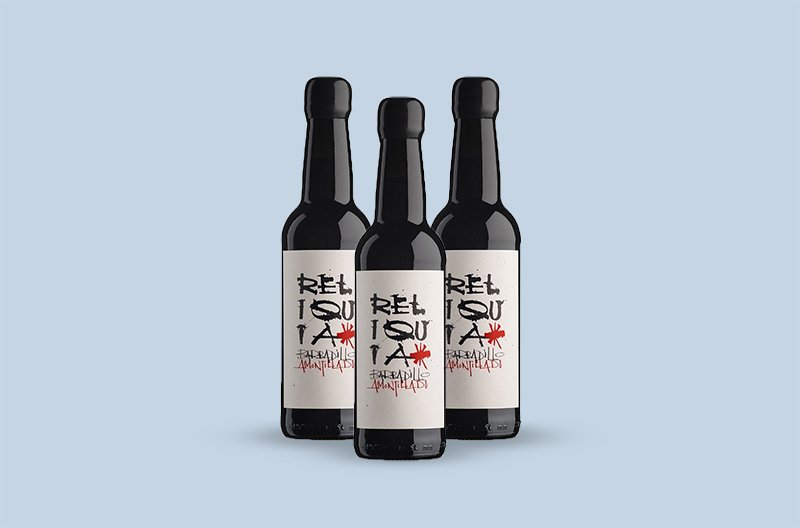
This Amontillado Sherry is a sweet wine with strong caramel and raisin tasting notes. This Sherry wine has a short finish with an addictive almond aroma.
Price of NV Barbadillo Reliquia Amontillado Sherry: $1,167
3. NV Barbadillo Reliquia Palo Cortado Sherry

This amber Sherry has a nose of wood, orange peel, and hazelnuts. The flavor profile offers notes of roasted nuts and dates.
Price of NV Barbadillo Reliquia Palo Cortado Sherry: $1,043
4. NV Barbadillo Reliquia Pedro Ximenez Sherry
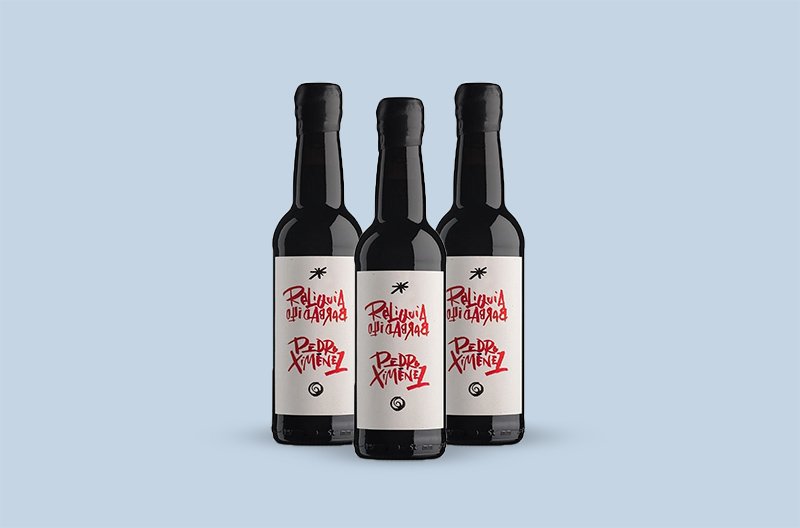
Here we have a fortified wine with dried fruit and almond aromas. The rich palate of this naturally sweet wine includes notes of nutmeg and raisin.
Price of NV Barbadillo Reliquia Pedro Ximenez Sherry: $807
5. NV Fernando de Castilla Singular Oloroso Sherry

This dry Oloroso Sherry has an aroma bouquet of almond, hazelnut, and dried fruit. The palate is an intoxicating mix of caramel, and roasted nuts flavor with a salty finish.
Price of NV Fernando de Castilla Singular Oloroso Sherry: $415
6. NV A.R. Valdespino Toneles Moscatel Sherry
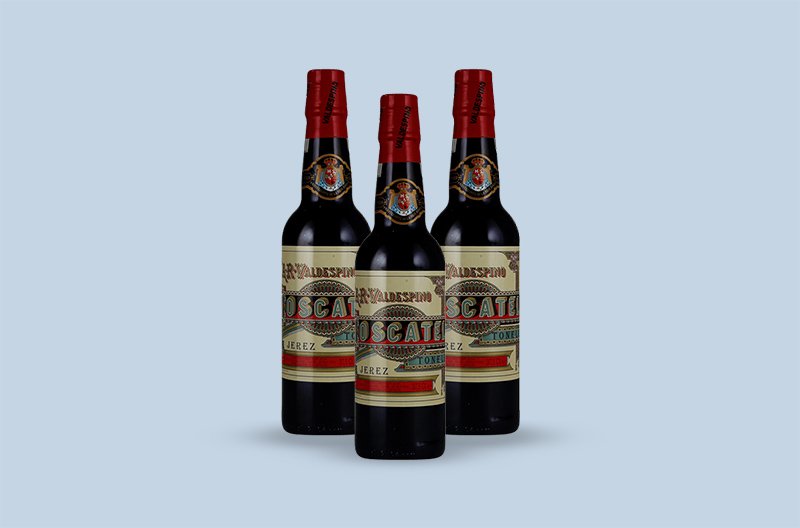
This sweet Sherry boasts a bouquet of aromas, including licorice, mocha, cinnamon, and burnt sugar. The sweet wine has a nutty flavor with tea, star anise, and raisin tasting notes.
Price of NV A.R. Valdespino Toneles Moscatel Sherry: $377
7. NV Osborne Solera BC 200 Oloroso Sherry
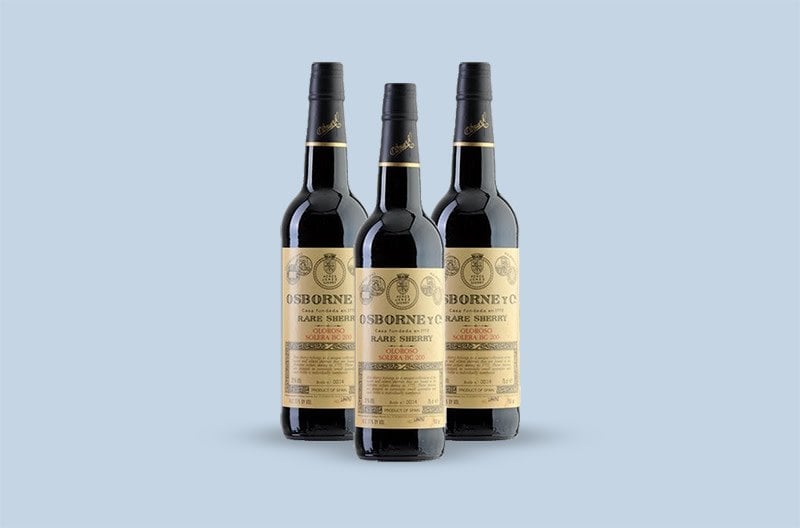
Here’s a dark amber Sherry with seductive aromas of spice and caramel. The flavors of this fortified wine are intense, with concentrated notes of almond, red fruit, and dates.
Price of NV Osborne Solera BC 200 Oloroso Sherry: $350
8. NV Osborne Solera AOS Amontillado Sherry
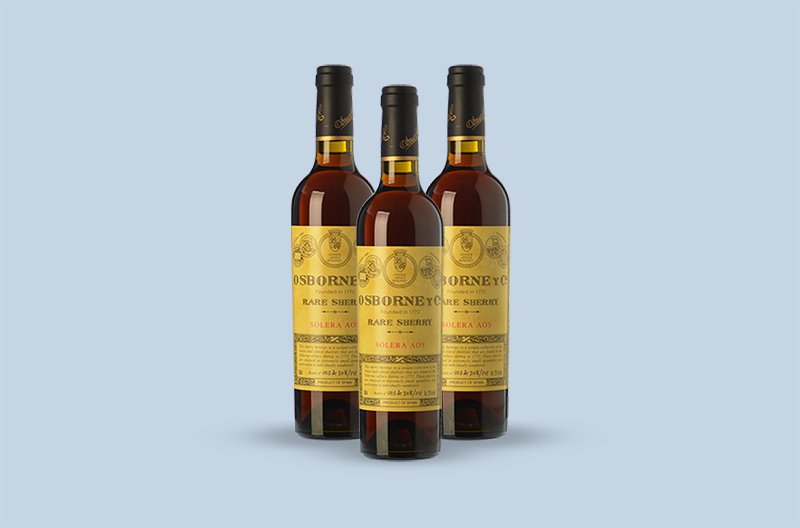
This Amontillado Sherry has a compelling nose of rosemary, thyme, and roasted hazelnuts. The palate is medium to full-bodied with a nutty flavor and hints of orange peel, raisin, and coffee.
Price of NV Osborne Solera AOS Amontillado Sherry: $299
Wondering if these delicious wines are worth investing in for the long-term?
Read on.
Investing in Sherry Wine
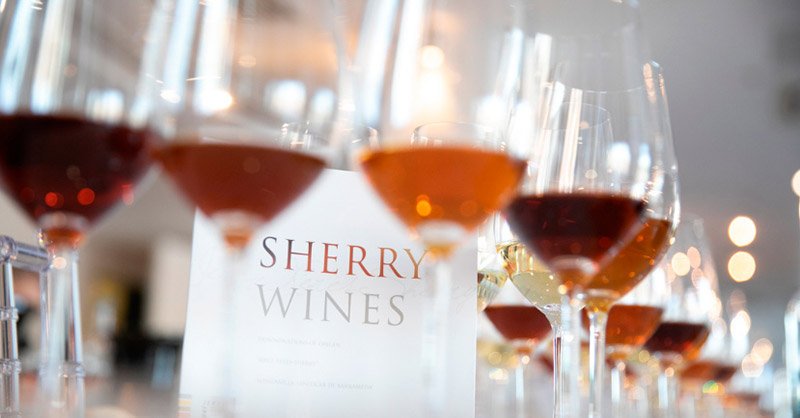
Most Sherry wines are meant to be drunk young. However, some sherries (like Fino or Manzanilla Pasada) can be aged for 5 to 10 years after bottling.
Here are some examples to illustrate the price trend of Sherry wines:
- Between 2019 and 2020, the Fernando de Castilla Singular Oloroso Sherry grew by 87%, from $192 to $360.
- The Barbadillo Reliquia Pedro Ximenez Sherry appreciated by 12%, from $740 to $835 from 2020 and 2021.
You’ll also spot unique Sherry wine bottles at auctions:
- Massandra’s Sherry de la Frontera 1775 or Massandra Sherry 1775 holds the world record for the most expensive Sherry bottle and was sold for $43,500 at a 2001 Sotheby’s London auction.
- A 10-bottle lot of assorted Limited Edition Finite Sherry wines was sold for $4,000 at a Zachys auction in April 2021.
Now, if you’re keen to start investing in sherries and other fine wines, you should enlist the help of Vinovest.
Buy Sherries and Investment-Grade Wines Through Vinovest

Vinovest is an online wine investment platform that helps you build a fine wine portfolio. You can buy, authenticate, store, and even sell your wines to buyers at a profit.
In addition to helping you buy and sell wines, Vinovest also:
- Authenticates and checks the provenance of your wine bottles so that you can avoid counterfeit bottles.
- Uses the expertise of Master Sommeliers to curate your customized portfolio to earn good returns.
- Stores your wine collection in safe, bonded warehouses under optimal conditions. You also get full insurance cover for emergencies.
- Charges a nominal annual fee of 2.5% (1.9% for investments over $50,000.)
- Ensures quick and easy shipping of wines to you or your buyer.
Secure an Exquisite Bottle of Your Favorite Sherry Wine Today!

If you find your interest piqued by the classic Sherry wine, don’t think twice. Get your hands on one of these gems and make space for it in your refrigerator, or cellar.
Begin your wine investment journey with Sherry and other fine wines by signing up with Vinovest today.

